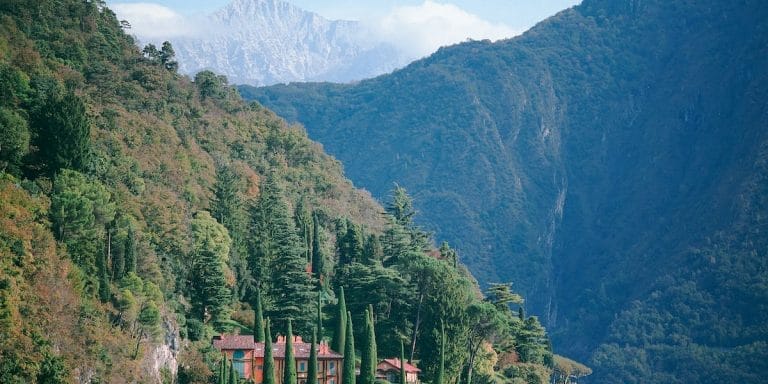Unleash Your Adventurous Spirit: Hiking and Trekking in Asia
Asia, with its diverse landscapes and breathtaking natural beauty, has emerged as a haven for adventure enthusiasts seeking thrilling hiking and trekking experiences. The region offers an abundance of opportunities to explore its majestic mountains, lush forests, and remote trails, making it a dream destination for outdoor enthusiasts from around the world.
One of the key reasons hiking and trekking in Asia have gained immense significance is the unique cultural and geographical diversity that the continent offers. From the towering peaks of the Himalayas in Nepal to the dense jungles of Borneo in Malaysia, Asia presents a myriad of landscapes to be discovered and conquered. This diversity allows travelers to immerse themselves in different cultures, encounter local wildlife, and witness awe-inspiring natural wonders.
Furthermore, the global impact of hiking and trekking in Asia cannot be underestimated. These activities promote sustainable tourism and contribute to the economic development of local communities. As travelers embark on their hiking expeditions, they often rely on local guides, stay in local accommodations, and purchase supplies from nearby villages. This not only generates income for the local population but also encourages the preservation of natural resources and the protection of indigenous cultures.
Moreover, the popularity of hiking and trekking in Asia has led to the establishment of well-maintained trails, infrastructure, and support services. Countries like Nepal, Bhutan, and Indonesia have recognized the potential of adventure tourism and have invested in developing trekking routes, constructing lodges, and ensuring the safety of hikers. This has not only facilitated access to remote areas but has also enhanced the overall experience for travelers, making it more accessible and enjoyable.
Overall, hiking and trekking opportunities in Asia have become a global phenomenon, attracting adventure seekers from all corners of the world. The significance lies not only in the personal fulfillment and physical challenges these activities offer but also in the positive impact they have on local communities and the environment. As more travelers discover the wonders of hiking and trekking in Asia, the region continues to thrive as a top destination for those seeking unforgettable outdoor adventures.

Imagine standing at the foot of the mighty Himalayas, surrounded by breathtaking landscapes and a sense of adventure in the air. Asia, with its diverse terrain and awe-inspiring natural wonders, beckons to all those seeking thrilling hiking and trekking experiences. From the towering peaks of Nepal to the dense jungles of Malaysia, this captivating continent offers a plethora of opportunities for outdoor enthusiasts to immerse themselves in different cultures, encounter local wildlife, and witness the wonders of nature. But what truly sets hiking and trekking in Asia apart is the positive impact it has on local communities and the environment. As more travelers discover the wonders of this outdoor adventure, it becomes clear that researching the hiking and trekking opportunities in Asia is a gateway to unforgettable experiences and a chance to contribute to sustainable tourism.

Hiking and Trekking Opportunities in Asia
Asia offers a plethora of hiking and trekking opportunities for outdoor enthusiasts. From towering mountain ranges to lush forests and breathtaking landscapes, the continent is a paradise for those seeking adventure and natural beauty.
One of the most popular destinations for hiking and trekking in Asia is the Himalayas. Spanning across several countries including Nepal, India, Bhutan, and Tibet, this majestic mountain range offers a variety of trails for all levels of hikers. The Annapurna Circuit in Nepal, for example, is a challenging yet rewarding trek that takes you through diverse landscapes and allows you to witness stunning views of snow-capped peaks.
Another notable hiking destination in Asia is the Great Wall of China. While most people associate the Great Wall with its historical significance, it also offers incredible hiking opportunities. The Jiankou section, known for its steep and rugged terrain, provides a thrilling adventure for experienced hikers. The Mutianyu section, on the other hand, is more accessible and offers panoramic views of the surrounding countryside.
For those seeking a unique trekking experience, the Japanese Alps in Japan are a must-visit. With a network of well-maintained trails, hikers can explore the picturesque landscapes, hot springs, and traditional mountain villages. The Tateyama Kurobe Alpine Route is a popular trek that takes you through stunning alpine scenery and allows you to traverse the famous Snow Wall, a towering snow corridor.
In Southeast Asia, the region’s diverse landscapes provide numerous hiking and trekking opportunities. In Thailand, the northern region is home to the famous Doi Inthanon National Park, where hikers can explore lush forests, waterfalls, and the highest peak in the country. In Indonesia, the island of Java offers the challenging trek to Mount Bromo, an active volcano surrounded by a surreal lunar-like landscape.
It is important to note that hiking and trekking in Asia require proper planning and preparation. It is advisable to research and choose reputable tour operators or hire experienced guides to ensure safety and minimize environmental impact. Additionally, respecting local customs and regulations, such as obtaining necessary permits, is essential to promote sustainable tourism in these areas.

Asia is a treasure trove of hiking and trekking opportunities, offering breathtaking landscapes and thrilling adventures. The Himalayas, spanning across Nepal, India, Bhutan, and Tibet, beckon with their majestic peaks and diverse trails. The Annapurna Circuit in Nepal is a challenging yet rewarding trek, showcasing stunning snow-capped peaks and varied terrains.
The Great Wall of China, renowned for its historical significance, also presents incredible hiking opportunities. The Jiankou section, with its steep and rugged terrain, provides an exhilarating experience for seasoned hikers. Meanwhile, the Mutianyu section offers accessible paths and panoramic views of the surrounding countryside.
For a unique trekking experience, the Japanese Alps in Japan are a must-visit. With well-maintained trails, hikers can explore picturesque landscapes, soak in hot springs, and discover traditional mountain villages. The Tateyama Kurobe Alpine Route is a popular trek, allowing adventurers to traverse the famous Snow Wall, a towering corridor of snow.
In Southeast Asia, the region’s diverse landscapes offer abundant hiking and trekking opportunities. Thailand’s Doi Inthanon National Park in the northern region boasts lush forests, enchanting waterfalls, and the country’s highest peak. Indonesia’s Mount Bromo on the island of Java presents a challenging trek through an otherworldly lunar-like landscape surrounding an active volcano.
Proper planning and preparation are crucial for hiking and trekking in Asia. It is advisable to research and choose reputable tour operators or hire experienced guides to ensure safety and minimize environmental impact. Respecting local customs and regulations, such as obtaining necessary permits, is essential to promote sustainable tourism in these areas.

Promoting sustainable tourism not only benefits the environment but also the local communities. By respecting local customs and regulations, tourists can ensure that their presence does not disrupt the delicate balance of these areas. Obtaining necessary permits is crucial as it helps regulate the number of visitors and prevents overcrowding, which can have a detrimental impact on the natural resources and cultural heritage of the destination. Additionally, respecting local customs and traditions allows tourists to engage with the local community in a meaningful way, fostering mutual understanding and respect. Overall, sustainable tourism practices play a vital role in preserving the beauty and integrity of these areas for future generations to enjoy.

Case Study 1: The Inca Trail, Peru
The Inca Trail is a famous hiking route in Peru that leads to the ancient city of Machu Picchu. This 26-mile trek takes hikers through breathtaking landscapes, including snow-capped mountains, cloud forests, and Inca ruins. The Peruvian government has implemented strict regulations to preserve the trail and limit the number of hikers per day to minimize environmental impact. This case study highlights the importance of sustainable tourism practices in protecting sensitive ecosystems and cultural heritage sites.
Case Study 2: The Appalachian Trail, United States
The Appalachian Trail is a 2,190-mile long hiking trail that stretches from Georgia to Maine in the United States. This iconic trail passes through 14 states, offering hikers diverse landscapes and wilderness experiences. The Appalachian Trail Conservancy works tirelessly to maintain and protect the trail, relying on volunteers and sustainable practices. This case study demonstrates the collaborative efforts required to preserve long-distance hiking trails and the positive impact of responsible tourism on local communities.
Case Study 3: Mount Kilimanjaro, Tanzania
Mount Kilimanjaro is the highest peak in Africa and a popular destination for trekkers from around the world. The Kilimanjaro National Park Authority has implemented measures to ensure sustainable tourism on the mountain, such as waste management systems and strict climbing regulations. This case study showcases the importance of balancing tourism opportunities with environmental conservation to protect fragile ecosystems and support local communities.
Case Study 4: The Great Himalaya Trail, Nepal
The Great Himalaya Trail is a long-distance trekking route that spans across the entire length of Nepal, from east to west. This trail offers hikers stunning views of the Himalayas and the opportunity to experience diverse cultures and landscapes. The Nepal Tourism Board promotes responsible tourism practices along the trail, emphasizing the need to respect local customs and minimize environmental impact. This case study highlights the significance of sustainable tourism in preserving biodiversity and cultural heritage in remote mountain regions.
These case studies illustrate the importance of sustainable tourism practices in the context of hiking and trekking opportunities, showcasing the efforts made to protect natural environments, cultural heritage, and local communities.

Hiking and trekking opportunities present unique challenges and future possibilities for sustainable tourism. These case studies highlight the efforts made to protect natural environments, cultural heritage, and local communities in popular hiking destinations.
The Inca Trail in Peru showcases the importance of strict regulations and limited hiker numbers to minimize environmental impact. This approach ensures the preservation of sensitive ecosystems and ancient ruins.
The Appalachian Trail in the United States demonstrates the collaborative efforts required to maintain and protect a long-distance hiking trail. The involvement of volunteers and sustainable practices contribute to the positive impact on local communities.
Mount Kilimanjaro in Tanzania emphasizes the need for waste management systems and climbing regulations to support sustainable tourism. Balancing tourism opportunities with environmental conservation is crucial for protecting fragile ecosystems and supporting local communities.
The Great Himalaya Trail in Nepal offers stunning views of the Himalayas and diverse cultures. Responsible tourism practices, such as respecting local customs and minimizing environmental impact, play a significant role in preserving biodiversity and cultural heritage in remote mountain regions.
These case studies highlight the challenges faced in managing hiking and trekking opportunities sustainably. However, they also provide insights into the future possibilities of responsible tourism, where environmental conservation and community support go hand in hand.

Future of Hiking and Trekking Opportunities
Hiking and trekking opportunities are expected to continue to grow in popularity as more people seek outdoor adventures and connect with nature. However, it is crucial to ensure that these activities are managed sustainably to protect the environment and support local communities.
One prediction for the future is the implementation of advanced technology to enhance the hiking experience. GPS tracking systems and mobile apps can provide real-time information about trail conditions, weather updates, and safety precautions, making it easier for travelers to plan their hikes and stay safe.
Another trend that is likely to emerge is the promotion of eco-friendly accommodations and infrastructure along hiking trails. This could include the development of sustainable lodges, eco-campsites, and waste management systems to minimize the environmental impact of hikers.
Furthermore, there will be a greater emphasis on responsible tourism practices. Travelers will be encouraged to respect local customs, traditions, and cultural heritage while minimizing their ecological footprint. Education and awareness campaigns will play a crucial role in promoting sustainable behavior among hikers.
In terms of destination choices, lesser-known hiking trails and off-the-beaten-path locations are expected to gain popularity. Travelers will seek unique experiences in remote areas, contributing to the economic development of local communities and reducing overtourism in popular destinations.
It is important for travelers to be well-informed about the guidelines and regulations of each hiking trail they choose to explore. They should be aware of the carrying capacity limits, necessary permits, and environmental conservation efforts in place. This information can be obtained through official websites, travel agencies, or local tourism offices.
By embracing sustainable practices, such as leaving no trace, supporting local businesses, and engaging in community-based tourism initiatives, hikers can contribute to the long-term preservation of natural environments and cultural heritage. The future of hiking and trekking opportunities lies in the hands of responsible and conscious travelers who prioritize environmental conservation and the well-being of local communities.

Hiking and trekking opportunities are on the rise as more people seek outdoor adventures and connect with nature. To ensure sustainability, it is important to manage these activities responsibly. Advanced technology, such as GPS tracking systems and mobile apps, can enhance the hiking experience by providing real-time information on trail conditions, weather updates, and safety precautions. Eco-friendly accommodations and infrastructure along hiking trails, such as sustainable lodges and waste management systems, will promote environmental conservation. Responsible tourism practices, respecting local customs and minimizing ecological footprints, will be emphasized. Lesser-known hiking trails and off-the-beaten-path locations will gain popularity, contributing to local economic development and reducing overtourism. Travelers should be well-informed about guidelines, permits, and conservation efforts through official websites or local tourism offices. By embracing sustainable practices, hikers can preserve natural environments and cultural heritage while supporting local communities.







